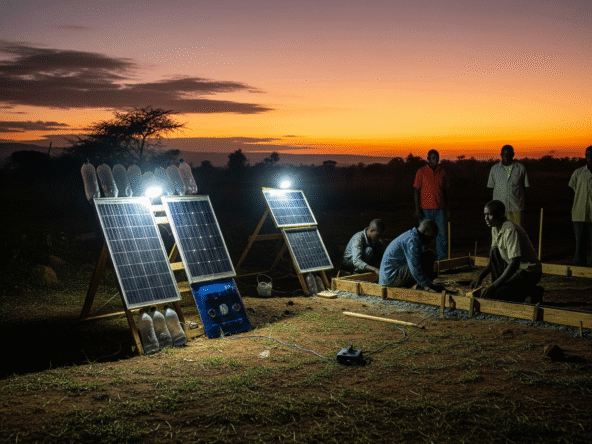Water supply is a critical consideration for homeowners in Kenya, especially in locations where county water supply is inconsistent or entirely unavailable. A raised water tank system offers reliable pressure, consistent water flow, and greater convenience for everyday use from showers to irrigation.
In this guide, we break down popular tank tower materials, cost ranges, design considerations, and construction tips suited for both rural and urban homes.
1. Why Opt for a Raised Water Tank?
Installing a raised tank offers several advantages:
- Steady water pressure via gravity
- Backup storage during water outages
- Minimal dependence on electric pumps
- Simplified water distribution to higher floors
If you’re working on a tight budget or off-grid project, this approach is more sustainable than investing in electric pressurizing systems. Complement this with other water-saving strategies in Water-Saving Fixtures and Plumbing Tips.
2. Common Tank Sizes and Usage
Choosing the right tank size depends on household size and water demand:
| Tank Size | Supports Daily Use For | Ideal Application |
|---|---|---|
| 500L | 1–2 people | Emergency or backup in rural plots |
| 1,000L | 3–5 people | Basic usage in rentals or bungalows |
| 2,000L | 6–8 people | Family homes with kitchen gardens |
| 5,000L+ | 10+ people | Farms, schools, or multi-units |
Tank placement should follow proper slope and drainage logic. See Construction Site Drainage Planning to avoid overflow or foundation erosion.
3. Materials for Tank Tower Construction
| Tower Type | Cost Range (KSh/Metre) | Key Benefits | Recommended Use |
|---|---|---|---|
| Concrete pillars | 6,000–8,000 | Stable and long-lasting | Permanent residences |
| Steel frame | 10,000–15,000 | Quick assembly, movable | Rental units, temporary setups |
| Masonry block | 8,000–12,000 | Heavy-duty, also offers storage | Homes with flat roofs or yards |
| Treated timber | 4,000–6,000 | Cheapest but less durable | Small farms, short-term builds |
For quality results, especially in concrete and steel designs, engage professionals. Review Hiring and Managing Contractors in Kenya to avoid misuse of materials or cost overruns.
4. Structural and Safety Guidelines
To ensure durability and safety:
- Build towers on stable, compacted soil
- Use diagonal bracing for steel or timber frames
- Paint steel with anti-rust coatings
- Elevate tanks at least one metre above the roofline
- Include overflow pipes and bottom taps for maintenance
If your home is in an area with expansive or black cotton soils, proper reinforcement is essential. Learn more from How to Build Low-Cost Septic Tanks in Black Cotton Soils.
5. Dual Water Tank Systems
Maximize your investment by creating separate systems for:
- Rainwater harvesting (non-potable uses)
- County or borehole water (drinking and cooking)
These setups are especially efficient when paired with soak pits or greywater channels. You can incorporate concepts from Recycled Concrete Aggregates and Green Building Practices to create eco-friendly water management.
A well-designed raised water tank structure is a game changer for homes in Kitengela, Ruai, Juja, Kiserian, and beyond. Whether you’re supplying a small bungalow or a row of rental units, elevated tanks provide affordable, uninterrupted water access with minimal maintenance.
Discover More Construction Insights:

